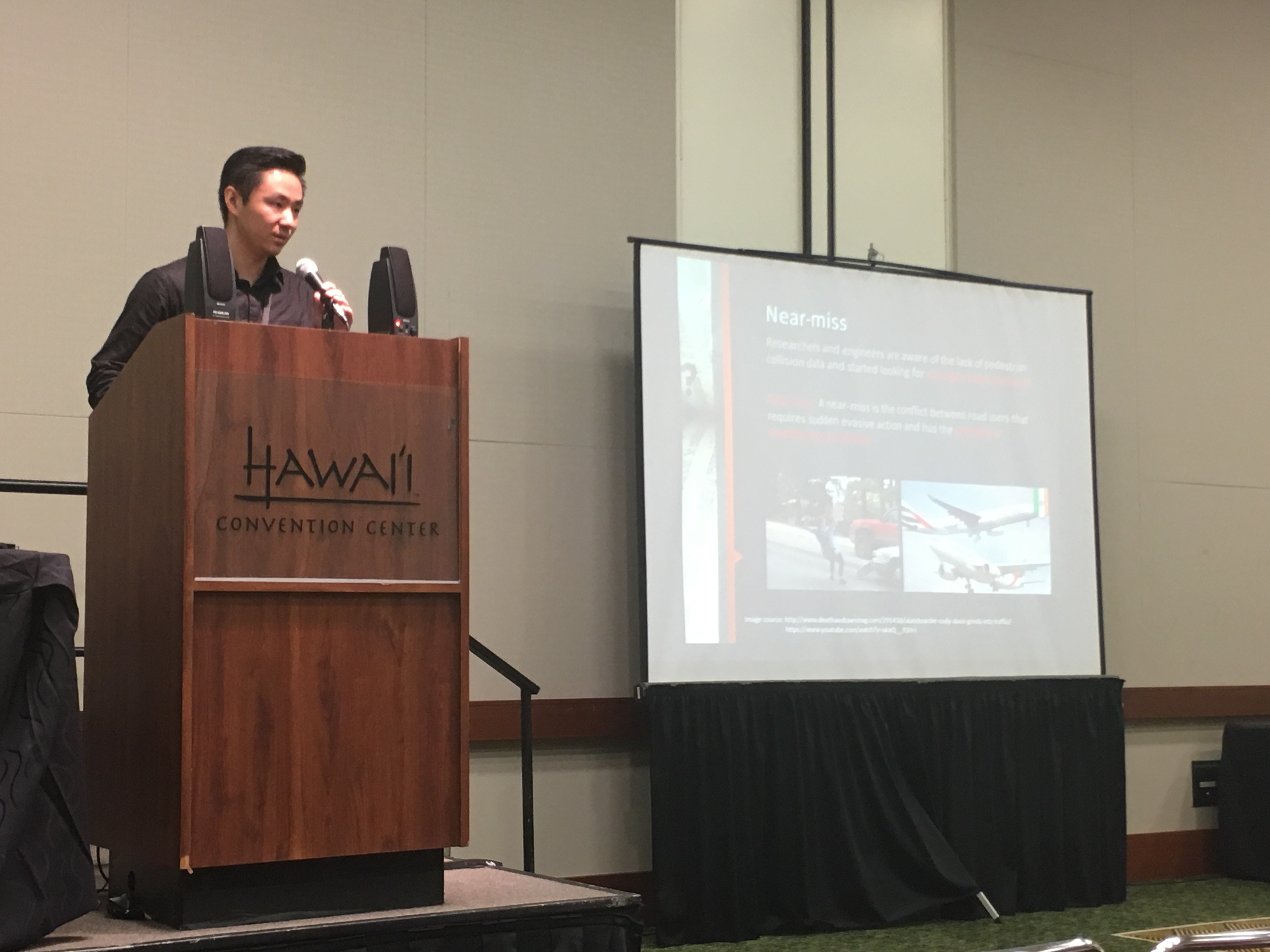-
August 22, 2017
PacTrans Student Research Presents at IEEE CVPR Conference

This past July, PacTrans Student Researcher, Ruimin Ke (UW), traveled to Honolulu, Hawaii, to participate in the IEEE Conference on Computer Vision and Pattern Recognition (CVPR) Traffic Surveillance and Challenge Workshop. The IEEE CVPR Conference is among the most prominent conference focused on computing. Mr. Ke attended to present research titled, A Cost-Effective Framework for Automated Vehicle-Pedestrian Near-Miss Detection through Onboard Monocular Vision. This presentation is part of an ongoing effort between the University of Washington, PacTrans, and the Washington State Transit Insurance Pool, funded partially through a TRB IDEA grant, to test collision detection technology on transit buses in the Pacific Northwest.
Pedestrian safety has generated broader concerns as the number of pedestrian-related fatalities keeps increasing in terms of the percentage to total fatalities. This is partly due to the lack of pedestrian data for conducting solid studies. Thus, near-miss, as a surrogate safety measure, has become popular in pedestrian safety. But extracting near-miss data from the huge amount of different resources requires efficient and automated methods. Computer vision techniques are powerful and able to take the information-rich traffic images and videos as input data. The study I presented at CVPR 2017 was about extracting vehicle-pedestrian near-misses from onboard monocular video data. This is among the first efforts to extract vehicle-pedestrian conflicts using onboard monocular vision. The framework we proposed is cost-effective. The experimental results showed that the proposed system is comparable to a commercial system with multiple camera sensors in terms of accuracy.
“The talk I gave at the Hawaii Convention Center was 20 minutes. Looks like people were very interested in our work, they raised several good questions. There were many computer vision experts at the traffic surveillance and challenge workshop. I learned a lot from their talks and studies, especially on how the computer science people thought about transportation problems. Basically, they focused more on the detection methodology part and developed very cool detection algorithms, but most of their work could be improved by incorporating the key domain knowledge to explore more interesting and diverse transportation problems. I think if we transportation people could learn from these studies and combine their strength with ours, we would be able to produce very valuable research and solve some critical problems. Last but not least, I would like to express my appreciation for the opportunity and funding provided by PacTrans and the TRB IDEA project on the paper and this great trip!”


